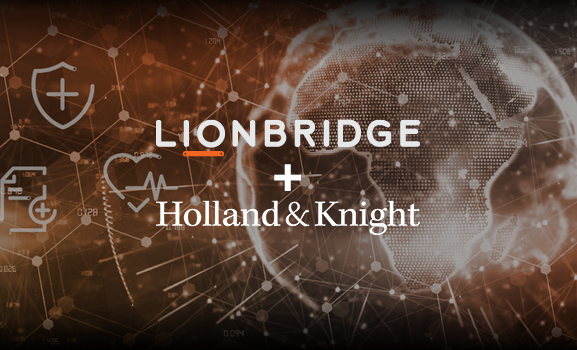- WHAT WE DO
Additional Services

- Industries

Case Study: Multilingual Retail Marketing
New AI Content Creation Solutions for a Sports and Apparel Giant

- RESOURCES

- WHO WE ARE

What We Do Home
Generative AI
- AI Translation Services
- Content Remix
AI Training
- Aurora AI Studio™
Machine Translation
- MT Tracker
Instant Interpreter
Smart Onboarding
Translation Service Models
Content Services
- Technical Writing
- Training & eLearning
- Financial Reports
- Digital Marketing
- SEO & Content Optimization
Translation Services
- Video Localization
- Software Localization
- Website Localization
- Translation for Regulated Companies
- Interpretation
- Instant Interpreter
- Live Events
- Language Quality Services
Testing Services
- Functional QA & Testing
- Compatibility Testing
- Interoperability Testing
- Performance Testing
- Accessibility Testing
- UX/CX Testing
Industries Home
Life Sciences Translations
- Pharmaceutical Translations
- Clinical Trial Translations
- Regulatory Translations
- Post-Approval Translations
- Corporate Pharma Translations
- Medical Device Language Services
- Validation and Clinical
- Regulatory Translations
- Post-Authorization Translations
- Corporate Medical Device Translations
Banking & Finance
Retail
Luxury
E-Commerce
Games
Automotive
Consumer Packaged Goods
Technology
Industrial Manufacturing
Legal Services
Travel & Hospitality
Insights
- Blog Posts
- Case Studies
- Whitepapers
- Solution Briefs
- Infographics
- eBooks
- Videos
Webinars
Lionbridge Knowledge Hubs
- Positive Patient Outcomes
- Modern Clinical Trial Solutions
- Patient Engagement
- AI Thought Leadership
SELECT LANGUAGE:
This blog post is the latest in Lionbridge’s series on the European Medical Device Regulation (EU MDR) and its implications for device makers. In our last post, we looked at the revised MDR timelines. This post will explore the MDR’s expanded language requirements, which impose an additional burden on device makers but also present clear opportunities.
Disclaimer: Please note that this blog post is for information only. Please consult official EU resources for the latest applicable guidance.
The Basics of New Requirements for Medical Device Translation
The European Medical Device Regulation (EU MDR) contains a lot of nuance and complexity. However, the rules for language requirements are simple. If a device is marketed in an EU member state, content related to that device must be provided in the official EU language of that member state. While EU language requirements have generated controversy in the past, the justification is evident in this case. Clinicians or patients using the devices must have clear information in a language they understand.
Much of the commentary on the MDR’s language requirements has focused on the increased burden and cost for device makers. These are valid concerns. Broadly, the MDR creates a universal requirement for translation across EU markets. In addition, stricter definitions mean that more products than before are now subject to regulation.
There’s no doubt that these changes give rise to challenges for device makers. They now face broader translation requirements for a wider range of devices. However, there are nuances and exceptions to consider. In the long term, the new regulations will likely benefit both patients and manufacturers.

Simplification for Medical Device Translation Procedures
We’ve mentioned one of the MDR’s clear benefits already. The MDR replaced the Medical Device Directive (MDD), which came into effect 30 years ago and was no longer fit for purpose. Under the MDD, the regulatory landscape was highly fragmented, with many rules unevenly applied by national authorities. The MDD was also showing its age. Notably, it left emerging product categories, such as software as a medical device (SaMD) and wearables, in a legal grey area.
An undeniable MDR benefit is the simplicity and certainty it brings to the regulatory landscape. Generally, any medical device marketed in an EU country must, at a minimum, be accompanied by clear labeling and instructions in the local language. This creates a level playing field for manufacturers and clear expectations for patients and public health systems.
In less obvious ways, the MDR also paves the way for more streamlined approval processes. In the longer term, greater transparency in the cost of bringing products to market may aid strategic decision-making in pipeline management.
This shouldn’t be surprising, since these effects were listed in the MDR’s clearly stated objectives. Its purpose, to quote the Regulation’s text, was to “provide a robust, transparent, predictable and sustainable regulatory framework.”
Even where there are nuances and exceptions to the rules, these exceptions reflect the MDR’s pragmatic basis, rather than bureaucratic whims.
Example: Certain device classes have a greater documentation burden because devices are classified by risk. Similarly, devices intended for professional use may be documented in English when marketed in Germany, the Netherlands, Croatia, and Belgium. The reason is simple and pragmatic: healthcare professionals in those countries are generally proficient in English.

One-Off Costs, or Worthwhile Investments in Medical Device Translation?
In the longer term, the MDR’s secondary effects may lead to substantial cumulative benefits. Indeed, in many cases, what may look like one-off costs will turn out to be worthwhile, long-term investments. This is a pattern that life sciences translation services providers have seen repeated many times.
When evaluating these costs and benefits, there are two vital points:
- Medical device translation services costs are almost never sunk costs. Reuse of translation assets has been built into modern translation workflows for years. The benefits to customers are readily quantifiable. Repeat translation requirements typically come with cost savings between 50% and 80%.
- The MDR enforces a whole-of-lifecycle approach to documentation and translation by encompassing activities from R&D to post-market surveillance. As repeatedly demonstrated in other industries, this approach dramatically reduces savings for translation clients.
Normalizing lifecycle-based content management is just the beginning. The MDR is not a box-ticking exercise. It’s concerned with much more than just ensuring that content exists in member state language. The rules set clear standards for the accuracy, clarity, and accessibility of that content. Under the MDR, meeting these standards will not be a one-off effort. It will be a continuous and coherent process.
These are some of the critical elements.
Key Elements of MDR Compliance
- Continuity: Unlike the MDD, the MDR isn’t narrowly focused on the approval process. Its scope extends from clinical investigations to post-market safety. In practice, this means that vital content components, like Summaries of Safety and Clinical Performance (SSCPs), will have many points of interdependency with core clinical documentation and, where relevant, ongoing safety reporting. Device makers will be strongly incentivized to adopt content authoring and management best practices.
- Compatibility: The MDR doesn’t just mandate certain forms of content. EUDAMED introduces a standardized content ecosystem designed to act as a “living picture” of all medical devices available in the EU. In its ultimate form, EUDAMED will implement common data structures and file formats for all important content. In adopting these standards, device makers will access benefits that other industries have enjoyed for years, with modern content management strategies that dramatically reduce costs and publication time.
- Translation and Automation Readiness: None of the abovementioned changes are new to LSPs. Providers like Lionbridge have been managing quality and accuracy in critical content since long before the advent of MDR. We are uniquely positioned to provide guidance on building compliant workflows. Beyond that, the device makers we work with are already discovering that MDR readiness shares many features with translation and automation readiness.
The costs and burdens of MDR compliance are real, but it’s an investment that’s likely to continue paying off for years to come.
Get in touch
Need assistance with your medical device translation needs? Lionbridge has decades of deep knowledge and expertise in life sciences translation services, medical device translation services, and clinical trial translation. Contact us today to find out more about Lionbridge as a life sciences language service provider.




